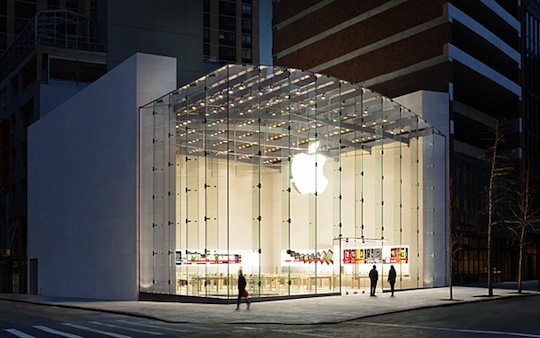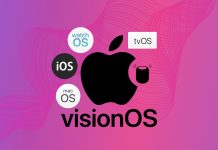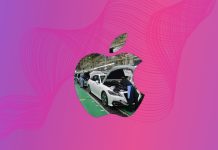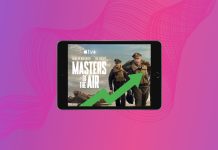 Ten years ago this week Apple opened its first retail store. Back in 2001, Steve Jobs gave a tour of the Tysons Corner Apple Store in McLean, Virginia. On May 19, 2011, Tysons Corner and Glendale Galleria in Glendale, California, opened to the public.
Ten years ago this week Apple opened its first retail store. Back in 2001, Steve Jobs gave a tour of the Tysons Corner Apple Store in McLean, Virginia. On May 19, 2011, Tysons Corner and Glendale Galleria in Glendale, California, opened to the public.
Table of Contents
A Brief History
2001 seemed like a crazy time to open a retail chain. Apple was still bleeding money, and the entire PC industry was still limping after the Tech Bubble Burst. It is the only time that Apple has hired outside consultants under Steve Jobs. In 2008, Jobs had this to say on the topic:
We do no market research. We don’t hire consultants. The only consultants I’ve ever hired in my 10 years is one firm to analyze Gateway’s retail strategy so I would not make some of the same mistakes they made [when launching Apple’s retail stores]. But we never hire consultants, per se. We just want to make great products.
Gateway’s stores were such a failure it was almost funny, if it wasn’t so damn sad. Here’s Michelle Kessler at the USA Today, back in 2004:
Struggling PC maker Gateway said Thursday that it plans to close all 188 of its retail stores and lay off 2,500 workers.The stores will close April 9, Gateway says. Its computers will still be sold on Gateway’s Web site and via phone.
The stores were performing so badly that Gateway’s stock rose on the news, according to the newspaper.
Apple learned a lot from their consultants. The first Apple Stores were built around not only Apple’s product line — which was just 4 computers at the time — but also Jobs’ digital hub vision. Here’s a video tour of the Tysons Corner Store, given by Jobs himself:
The stores were part musuem, part playground. Computers sat on minimal tables, with simple lighting. Kids could play games on computers that sat on short tables with beanbag chairs.
Designing the two stores was no small task, according to this article over at ifoAppleStore, the best source online for information on Apple’s retail stores. Apple built several full-scale model stores in a warehouse near Apple’s headquarters to test different concepts and looks. After months of work in October 2000, Ron Johnson, the Apple VP in charge of retail, wasn’t convinced it would work, and told his boss:
Jobs stormed off to his office, but returned within an hour in a better mood, having realized that virtually every great project at Apple, “had been shelved and started over.” For example, Johnson said the current iMac design was considered finalized–and then the design was tossed out and the process was restarted, to eventually come up with the current design.
Clearly, Apple didn’t just jump into the launch of the Apple Store.
In 2004, Apple opened the first of its mini-stores. Here’s a tidbit from the Wall Street Journal:
Mr. Jobs said that Apple wants, ‘the best buying experience’ for its products, and that most of the resellers weren’t investing enough in their stories (sic) or making other selling improvements.
While mini-stores allowed the company to move into many more shopping malls, many of these locations have since been renovated into full-sized stores, after traffic overwhelmed the tiny stores.
An Experience, Not a Store
Apple Retail is unique, without a doubt. Apple didn’t want to just build a store — it wanted to build an experience.
Many of the early stores had a theatre in the back, with seats, a large screen and great speakers. Store employees would use this area to show off software, teach classes and more. In fact, my local store gave a demo of OS X 10.4 Tiger when it came out — it was packed.
Eventually, Apple moved the One to One program training and demos from a classroom environment to a more friendly, intimate setting. One to One lets customer and employees interact and work on projects on a — well — one to one basis. Today, One to One helps thousands of new Mac customers become better acquainted with their computers.
The single most important and unique element of the Apple store experience, however, is the Genius Bar. Apple wanted customers to be able to bring their products back in for service. This provided customers with a face-to-face interaction with someone trained in supporting and repairing the Macintosh. Instead of having to call a 1-800 number, customers could sit down, explain their issues, and very often, leave with the problem resolved. When something was more complex, repairs could be made right there, in the store, usually within just a few days.
It was revolutionary, and has been copied by just about every other computer retailer in the market, including Best Buy, Circuit City and others.
The Genius program had evolved, with things like the iPod and iPhone adding to its scope of responsibilities. An appointment system had to be implemented, and some repairs have been off-loaded to Apple’s repair depots. That said, it’s still a critical component of Apple Retail’s success today, a full decade later.
Finally, everything about the Apple Store is an events. When a new one is planned in a city, it makes the news. When a new product is launched, lines often clog up other retailers’ space, wrapping around blocks and through food courts.
Loads of Tech
The Apple Store was one of the first chains to have fully connected computers on display. Customers could come in and check their email and browse the Internet freely. This was a genius move, really, as it let customers interact with Apple’s hardware and software.
Apple’s EasyPay system was another revolution Apple brought to the retail space. While most stores have registers and lines, Apple has moved the check-out procedure to mobile, on-the-fly checkouts via credit card.
Starting in 2009, Apple migrated its EasyPay system from Windows Mobile devices to the iPod touch. Since then, Apple’s solution has been spotted at Old Navy and other stores. It is a great example of something Apple created for its own use becoming a major product in industry.
However, EasyPay’s history has had some rough spots. The system was overwhelmed during the iPhone 3G launch, and the devices (before the iPod touch) were unreliable.
And then there’s this video, that, frankly, I can’t add any commentary to at all.
The Future
The future of Apple retail seems to be abroad. The company has opened some hugely successful stores across Europe, and most recently, in China. In fact, Asia is now a major source of growth for Apple.
But Apple retail is also growing closer than China. Apple released an iPhone app a while back, making it even easier to shop. Check out the app below.
Un-linked quotes Via On the Road






